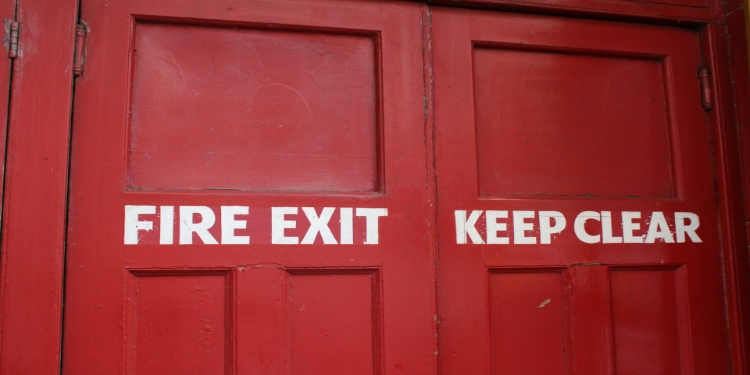The importance of complying with fire safety regulations has never been more pressing. As a contractor or trade professional, you have a key role to play in ensuring that fire doors meet stringent requirements.
Failing to adhere to these standards not only jeopardises safety but can also lead to significant legal and financial consequences. Get these fundamentals right.
Understanding fire door standards
As an integral part of a building’s fire protection system, fire doors are incredibly important. They help contain the spread of smoke and fire, providing essential time for occupants to evacuate safely.
Each must carry the correct certification, often in the form of a label, indicating the fire-resistance rating. This rating typically ranges from 30 minutes to 120 minutes, depending on the level of protection required for the building. You should always confirm that the door meets the specific needs of the building’s fire strategy.
Correct installation is crucial
Even if you install top-quality, certified fire doors, their effectiveness is compromised if not installed properly. Make sure that the door frame is securely fixed and that all gaps around the door do not exceed the maximum tolerance specified by the manufacturer (usually 4mm, unless at the bottom). Misalignment or poorly fitting doors can significantly reduce their fire-resistance performance.
Equally, the installation of hardware, such as hinges, locks and latches, must meet the same fire-resistance standards. Often overlooked, these components need to be equally robust and compatible with the fire door’s specifications.
Regular maintenance and inspection
Compliance doesn’t end once a door is installed. Regular maintenance and inspection are essential to ensure that it continues to perform effectively. The Fire Safety Order 2005 places a legal duty on responsible persons to maintain fire safety equipment, including fire doors. Scheduled checks should focus on making sure the door still fits its frame and remains free from damage.
Over time, fire doors can deteriorate with wear and tear or because of changes in the building’s structure. Keeping up with routine inspections should help identify any issues early. If repairs are necessary, only qualified professionals should handle the work to ensure the door retains its fire-resistance rating.
Compliance documentation and records
Proper record-keeping is a vital part of ongoing compliance. Keep detailed logs of inspections and repairs, plus any fire door upgrades or replacements carried out on-site. These documents serve as crucial evidence in the case of an inspection or audit. They also help demonstrate that you’re actively maintaining the fire doors in line with safety regulations.
Failure to maintain proper records can lead to difficulties if legal or insurance matters arise. In the event of a fire-related incident, these documents may also help prove your adherence to the necessary fire safety standards.
David Prior
David Prior is the editor of Today News, responsible for the overall editorial strategy. He is an NCTJ-qualified journalist with over 20 years’ experience, and is also editor of the award-winning hyperlocal news title Altrincham Today. His LinkedIn profile is here.












































































